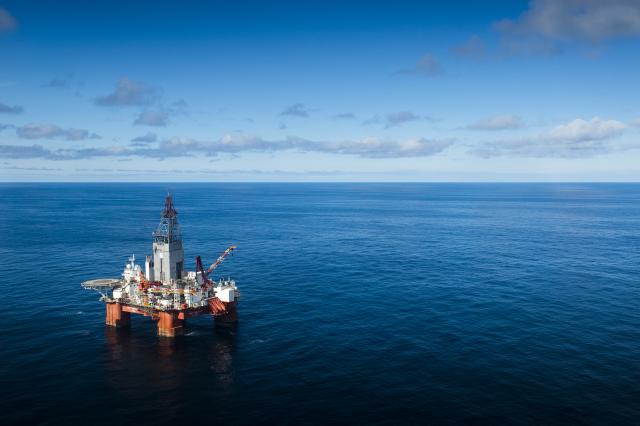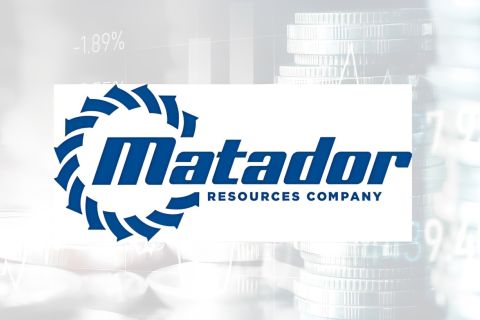
The pandemic and consequent oil price crash has halted several major field developments across the U.K., Norway, North Sea and Barents Sea. (Source: Ole Jørgen Bratland/Equinor)
[Editor's note: A version of this story appears in the August 2020 edition of E&P. Subscribe to the magazine here.]
Bruised by a historic downturn, upstream operators across the globe continue slashing capex budgets, scaling back operations and reducing their workforce.
The future of Europe’s upstream sector—which was already in transition and overwhelmed by environmental and regulatory challenges—is now more uncertain than ever, according to Wood Mackenzie analysts. Even as significant capex reductions have been made, tougher decisions are still to come on pre-final investment decision (FID) projects across various European regions.
In addition, some 200 mid- and small-sized oilfield service companies in Europe could become insolvent as purchases on the oilfield service market are set to drop by $5 billion this year compared to 2019, as reported by Rystad Energy.
“The [European] companies initially responded to the pandemic by reducing activity levels … and most companies reverted to minimal manning on installations in order to maintain production and protect the workforce at the same time,” said Yvonne Telford, senior analyst of northwestern Europe with Westwood Global Energy Group.
However, continued low oil prices have hit revenues hard, and companies in the U.K. and Norway have responded with deeper spending cuts, she added.
Field Development Delays
Nine field developments—seven in the U.K. and two in Norway—that were expected to be sanctioned in 2020 by the Oil and Gas Authority and the Norwegian Petroleum Directorate have been deferred, Telford said. In the U.K., only three of the eight fields that were planned to start in 2020 are expected onstream due to the deferral of shutdown activities, which include subsea tie-in work and project delays related to the pandemic. In Norway, due to the government’s pledge to cut Norway oil output, seven planned 2020 startups were pushed to next year, accounting for about 700 MMboe.
Among large producers, Chrysaor has cut spending plans by 30% and postponed several drilling projects, both infill and exploration-related, including the appraisal of the Grevling oil project in Norwegian waters.
Shell has postponed its $1 billion Jackdaw natural gas field development in the North Sea. A decision on whether to proceed with developing the Cambo Field northwest of the Shetland Islands was postponed in March until 2021 according to Shell and its partner on the project, Siccar Point.
Also, Exxon Mobil is preparing to restart the sale of its British North Sea assets. The sale process, which was initially planned for late last year, is expected to raise less than originally expected after a 40% drop in oil prices since January and a weakened long-term outlook, Reuters reported.
The slashing of capex budgets has significantly impacted exploration and appraisal drilling activity in Europe.
As Telford pointed out, “The number of wells expected to be drilled in the U.K. and Norway in 2020 has reduced from 81 at the start of the year to 44 in June, with the likelihood of the figure falling further. This equates to a 52% reduction in exploration and appraisal activity in the U.K. and 39% in Norway, compared to the 2019 activity levels.”
She added that larger projects are now at risk of not progressing to development.
“Although Jackdaw and Cambo project sanctions have been deferred to 2021, these North Sea projects are deemed only marginally commercial based on existing cost estimates,” she said.
In addition, the Equinor-operated Rosebank project, expected to be sanctioned in 2022, and BP’s Clair Phase III development are facing commercial challenges in the low-price environment. Combined together, the four projects would contribute about 850 MMboe to the U.K.’s recoverable resources.
Low oil prices in Norway have put two major project developments at risk—the Wisting development in the Barents Sea and NOAKA development operated by Aker BP and Equinor.
Spending and Production Cuts
According to a survey by Norway’s national statistical institute, Norwegian oil and gas investment—a key economic driver—is expected to decline sharply in 2021 with the biggest drop expected in the exploration for new reserves and spending on development plans, Reuters reported.
In the North Sea, operators have been quick in their response to the downturn by restricting spending levels, according to recent findings by Wood Mackenzie. 2020 budgets have been slashed with FIDs deferred, infill drilling campaigns canceled and miscellaneous expenditure withheld. Analysts also predict that North Sea production will suffer an immediate drop, partly due to Norway’s production cuts. However, in the longer term, output levels will largely depend on FID approvals as operators will be looking for more clarity on the market situation before moving ahead with new developments.
The Norwegian government announced in April that it would participate in the global effort to reduce oil supply, pledging to cut production by 134,000 bbl/d in the second half of 2020. The Norwegian oil minister also announced that the startup of production of several fields would be delayed until next year.
As Telford pointed out, the proposed cuts would result in Norway producing at a maximum rate of 1.725 MMbbl/d for the remainder of the year, which would subsequently lead to a 5% cut in the annual production rate for the majority of oil fields in Norway. Equinor as the largest net producer in Norway bears the largest proportion of the cuts accounting for about 30% of the reduced volumes.
Telford added that the situation is slightly different in the U.K. where the fall in oil prices is not expected to have a significant impact on this year’s production, as any output reductions will be balanced by the deferment of planned field and pipeline maintenance shutdowns. However, the impact on production will be felt in 2021 and beyond due to deferred and canceled investment and projects. In addition, some production facilities are expected to cease production earlier than planned, such as EnQuest’s Alma/Galia and Dons area and Premier Oil’s Balmoral area, Telford said.
Recovery Path
The Norwegian government approved additional tax breaks in June to spur investment, protect jobs and maintain activity levels through 2022. Rystad Energy analysts suggest the measure will improve E&P companies’ short-term liquidity and reduce breakeven prices for future development projects by an average of about 40%. This substantial improvement in project economics is expected to fast-track new projects on the Norwegian Continental Shelf over the next two years.
On the other hand, the U.K., which has little maneuverability left to offer tax incentives to the E&P industry, is more exposed to the oil price downturn necessitating greater cuts in opex and capex, Telford said.
“Major oil producers can weather the downturn more effectively compared to smaller producers, as the former tend to have lower costs per barrel of oil equivalent [boe]. Those companies that have taken on the challenge of returning value from later-life assets hold higher relative costs per boe and are more impacted,” she said. “These companies have been more ruthless in cost control, and there will inevitably be business casualties, particularly in the service sector and supply chain. Stabilization in the oil price will help companies plan for recovery, but the oil price largely depends on countries avoiding a second wave of COVID-19.”
In addition, companies in the U.K. and Norway will need to focus on smaller incremental gains across their portfolios to maximize revenue in the short term. “The marginal gains this can bring will help build toward higher investment and recovery,” she said.
Recommended Reading
Uinta Basin: 50% More Oil for Twice the Proppant
2024-03-06 - The higher-intensity completions are costing an average of 35% fewer dollars spent per barrel of oil equivalent of output, Crescent Energy told investors and analysts on March 5.
Matador Stock Offering to Pay for New Permian A&D—Analyst
2024-03-26 - Matador Resources is offering more than 5 million shares of stock for proceeds of $347 million to pay for newly disclosed transactions in Texas and New Mexico.
CEO: Coterra ‘Deeply Curious’ on M&A Amid E&P Consolidation Wave
2024-02-26 - Coterra Energy has yet to get in on the large-scale M&A wave sweeping across the Lower 48—but CEO Tom Jorden said Coterra is keeping an eye on acquisition opportunities.
E&P Earnings Season Proves Up Stronger Efficiencies, Profits
2024-04-04 - The 2024 outlook for E&Ps largely surprises to the upside with conservative budgets and steady volumes.
Exxon, Chevron Tapping Permian for Output Growth in ‘24
2024-02-02 - Exxon Mobil and Chevron plan to tap West Texas and New Mexico for oil and gas production growth in 2024, the U.S. majors reported in their latest earnings.





